Ongoing Initiatives
After expanding the project to the 3-year Sungai Penchala River Education Programme, ongoing Sungai Way Project initiatives are sustained by communities especially from the Sahabat Komuniti Sungai Way. The initiatives include (open image in new tab for full resolution):
(1) Water Saving through Thimbles
The W.A.T.E.R. project team realized that behavioural changes alone would not be able to reduce the water consumption but need effective and cheap water saving device. Thimbles (in Figures) are button-like structures that can be fixed at aerators or showers, and easy to be fixed that not need any plumbing works. In Malaysia, thimbles are already promoted by PBA in Penang, SAJ in Johor and latest is Air Selangor in Selangor. Thimbles with the following advantages are selected as water saving devices (WSD) to be given to communities as part of water conservation initiatives.
- Thimbles are easy and non-burdening preparatory water saving devices for Malaysians to carry out their household chores with controlled water flow.
- Thimbles do not require major plumbing works and changes in water faucets. It is easy to fix by just following the instructions and wide range of audience can use it upon distribution. Thus, the thimbles can easily reach larger target groups.
- Thimbles are economically practical to reach the overall Malaysian population.
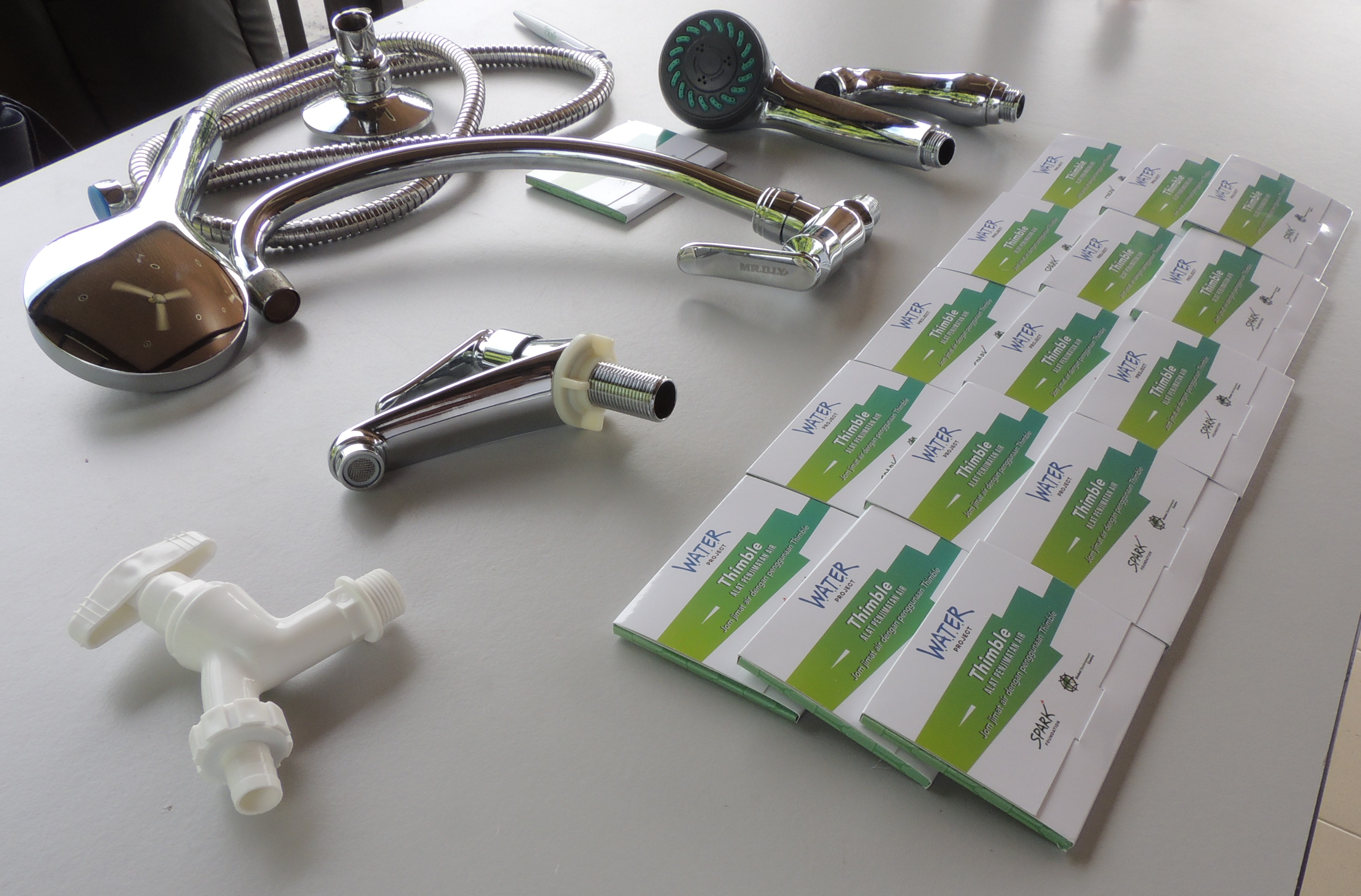 |
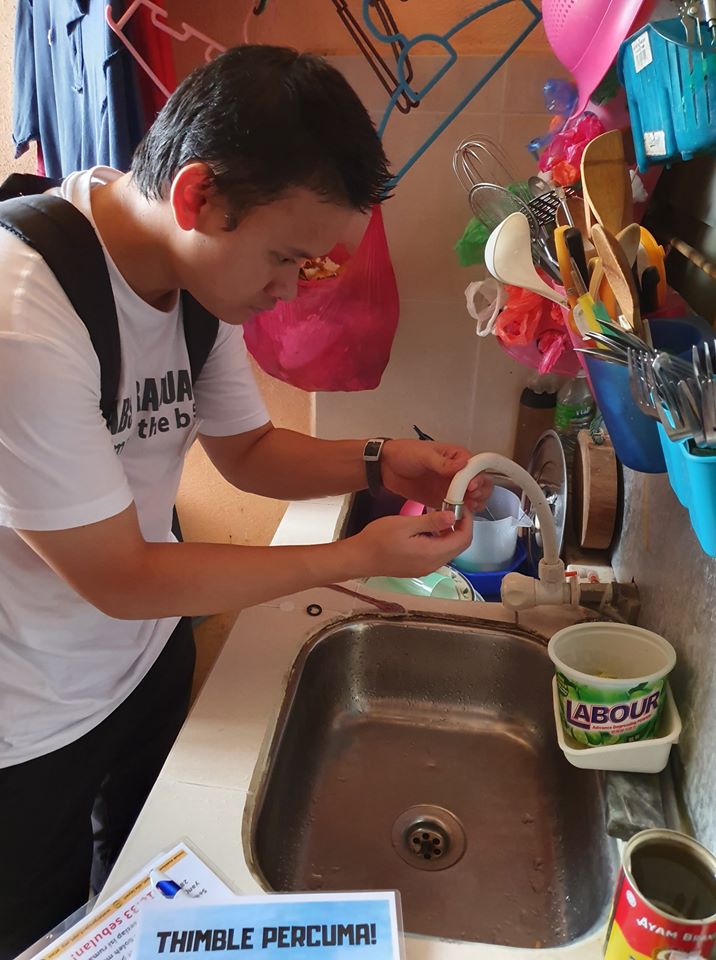 |
| Thimble Devices |
Thimbles Installation |
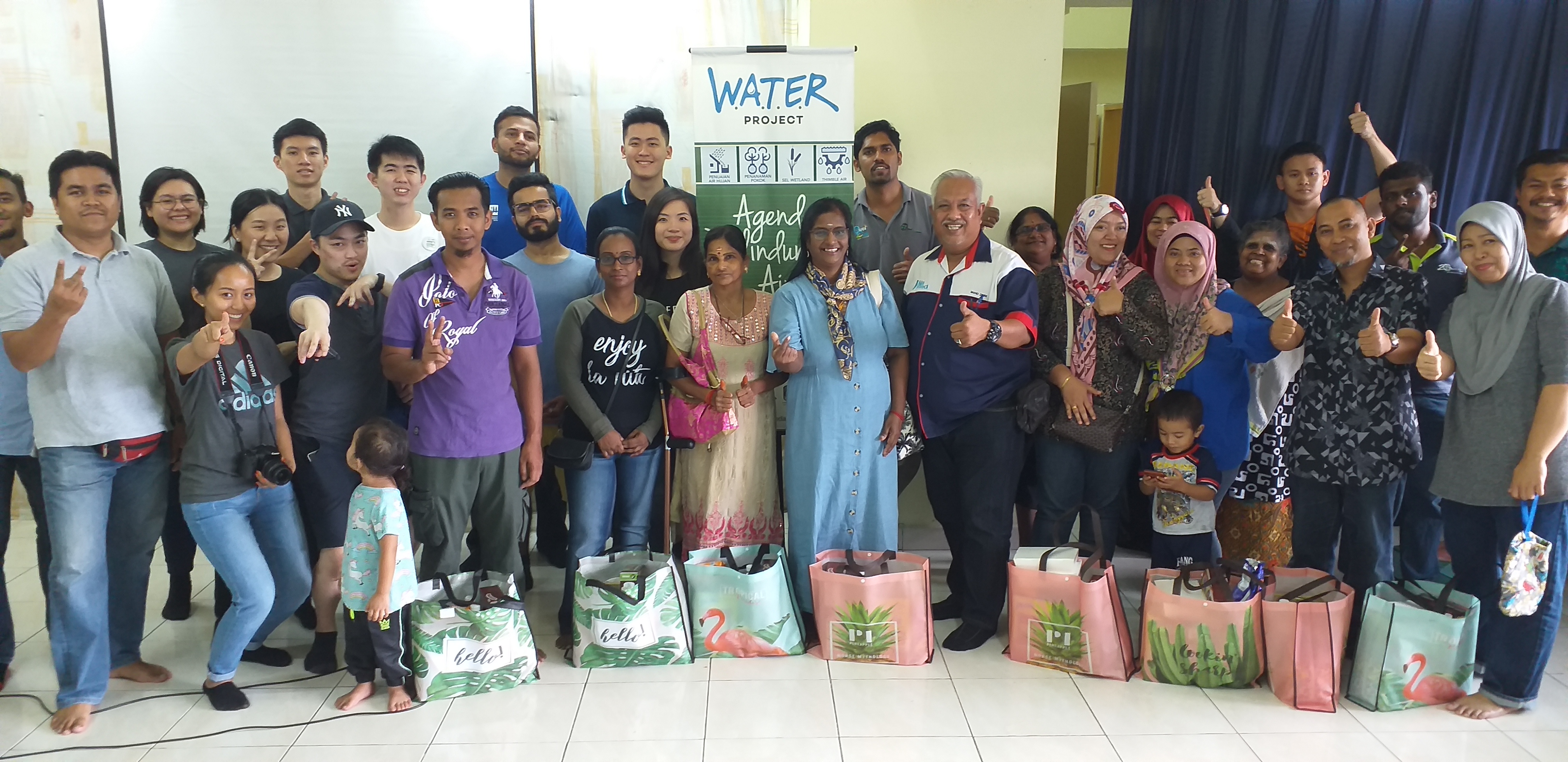 |
| Water saving initiatives by Blok 11 Communities |
Thimbles are proven to assist in reducing water consumption in Singapore. But, there was no local data or publicly available data to support the effectiveness of thimbles. Therefore, W.A.T.E.R. project took the challenge by introducing thimbles to communities in Selangor at selected river basins and quantify the water reduction from using thimbles. Currently, 1292 beneficiaries from 281 house units from Block 1 Desa Mentari, Blok 3 Desa Mentari, Blok 5 Desa Mentari, and Block 11 Desa Mentari are benefitting from the initiatives. The thimbles water saving study conducted with community participation showed thimbles save 19 litres of tap water per person per day.
(2) Rain Water Harvesting System (RWHS)
The RWHS provided to communities in need for non-potable water usage for their community garden and clean-up activities. W.A.T.E.R Project supports several communities at Desa Mentari with RWHS for their non-potable water usage such as watering plants at community garden and washing purposes. The communities benefitting from the initiative are Block 1 Desa Mentari, Block 3 Desa Mentari, Block 5 Desa Mentari, Block 11 Desa Mentari and Sg Way Community River Information Centre.
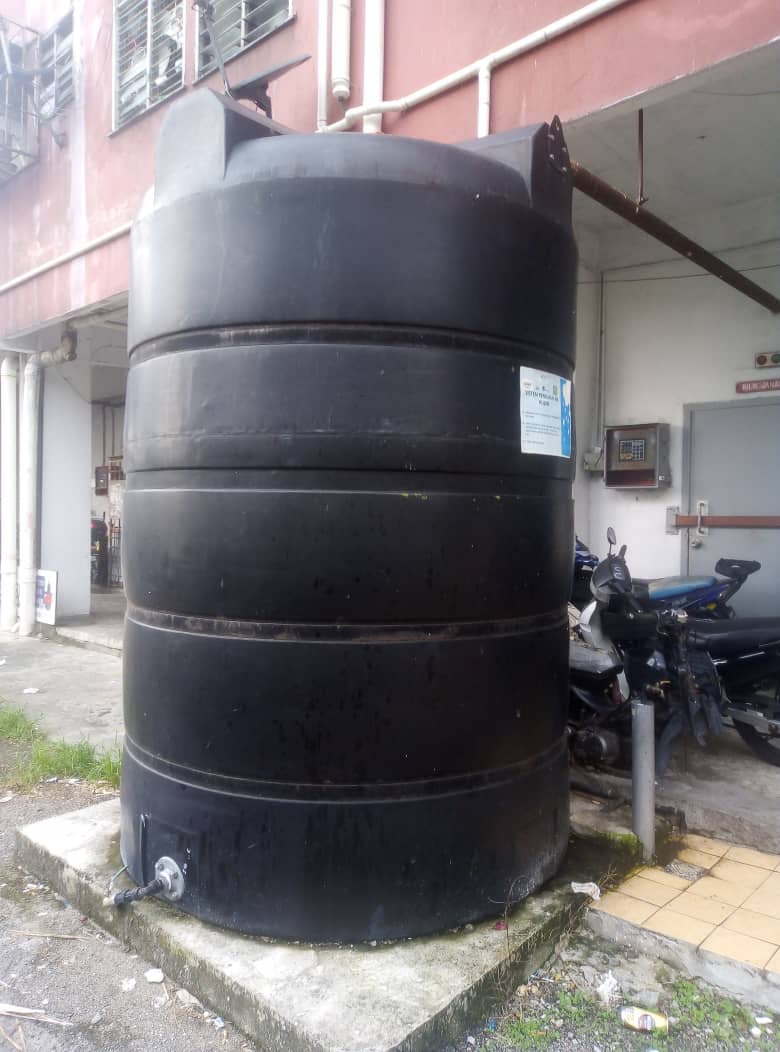
(3) Community Garden Initiatives
W.A.T.E.R Project supports several communities at Desa Mentari with community garden initiatives as HEART Approach for them to adopt river monitoring and water saving practices. The communities benefitting from the initiative include Block 1 Desa Mentari, Block 3 Desa Mentari and Block 11 Desa Mentari.
Blok 1 Community Garden
Blok 3 Community Garden
Blok 11 Community Garden
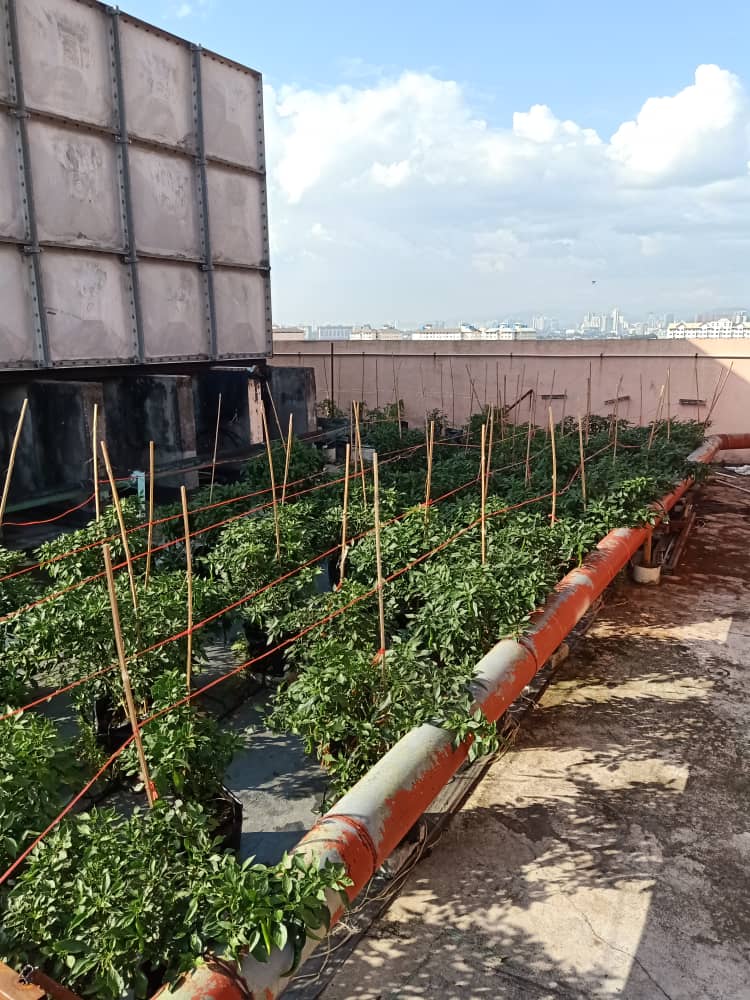
(4) River Clean-Ups
An awareness programme to remind the communities on their ownership and responsibility to keep their rivers clean.
Latest Updates
On 18 May 2025, a total of 20 volunteers—comprising 19 college students and 1 lecturer from Sunway University—participated in the Sungai Way River Cleanup Siri 1/2025 under W.A.T.E.R. Project. In the morning, volunteers gathered for an introductory briefing on the significance of river clean up initiatives. Following that, tools such as gloves, boots, trash pickers, and garbage bags were distributed. Before the cleanup commenced, the volunteers were introduced to the concept of RIVER Ranger 2.0 Monitoring Programme, demonstrating both physical and chemical methods for water quality assessment.
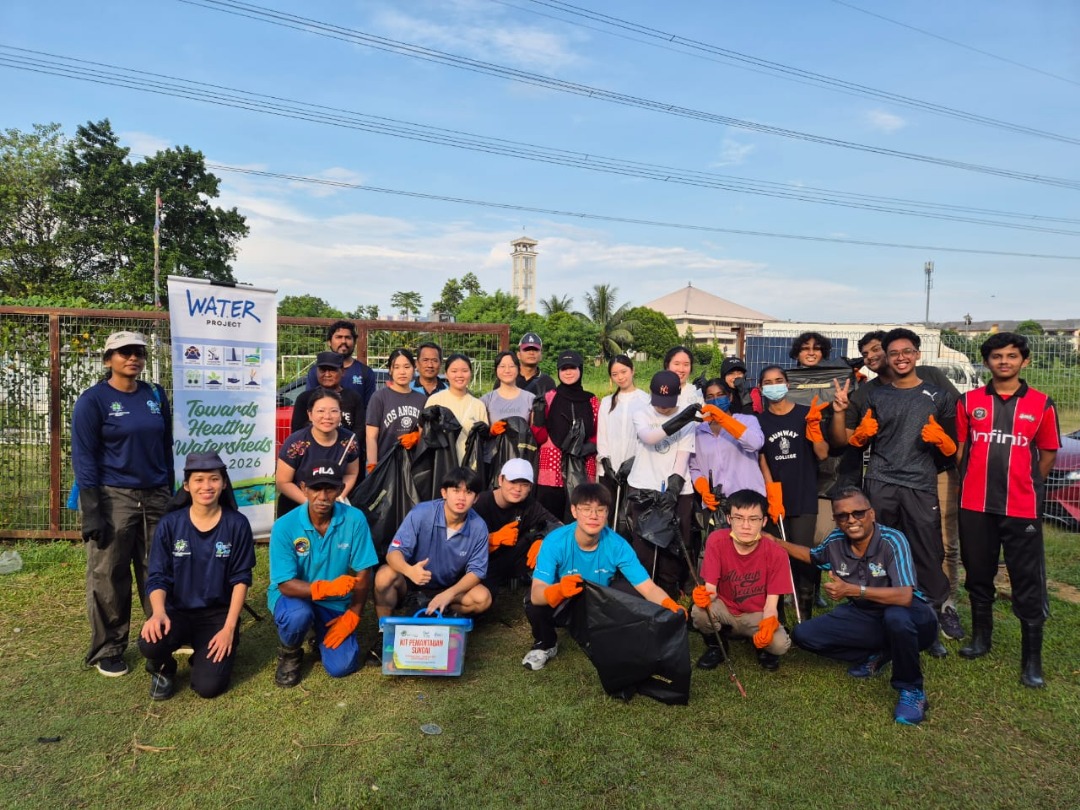
The cleanup covered river and the community park adjacent to the river. As volunteers carried out their tasks, they were encouraged to observe and identify environmental issues contributing to river pollution. Dr. Kalithasan highlighted ongoing protection efforts, including the wetland planting such as aquatic umbrella plants (Cyperus alternifolius) and the installation of river care educational signboards by the river.
After the cleanup, volunteers segregated and weighed the collected waste. A total of 25.7 kg of waste was collected, consisting of:
• Plastic: 27.24%
• Others: 36.58%
• Glass: 7.9%
• Paper: 3.1%
• Cans: 1.6%
• Non-Recyclables: 19.8%
• Organic Waste: 3.9%
The volunteers were also introduced to the log boom system installed, designing to trap large debris and prevent blockages in the river. The event concluded with a sharing session based on their level of understanding and actions, which can contribute to ongoing efforts to protect and preserve our water resources.
|